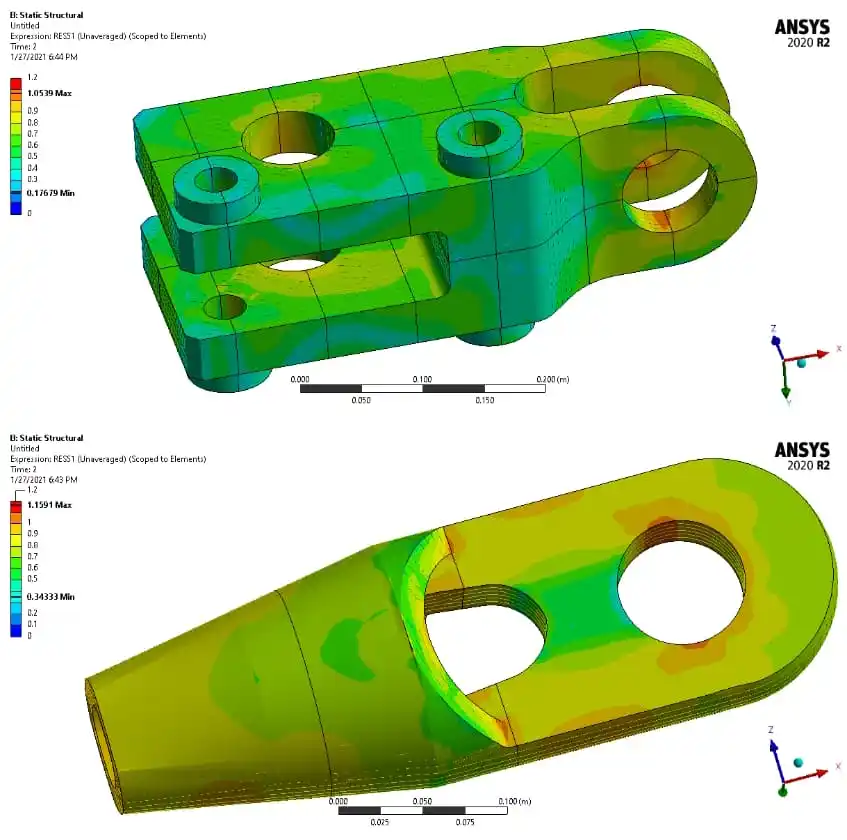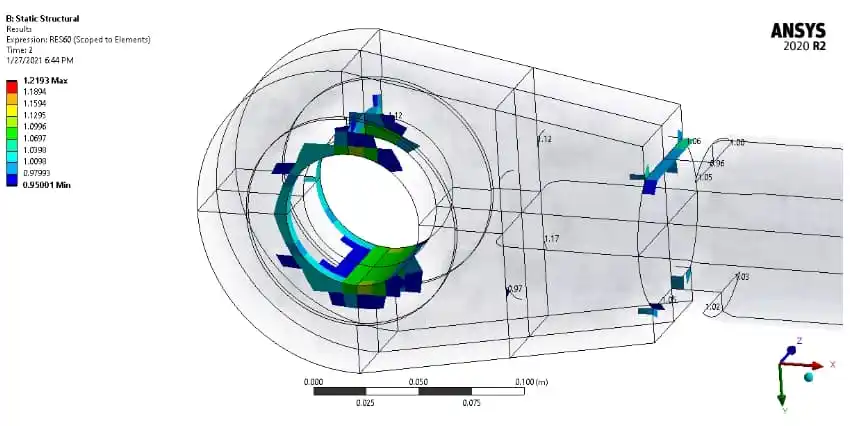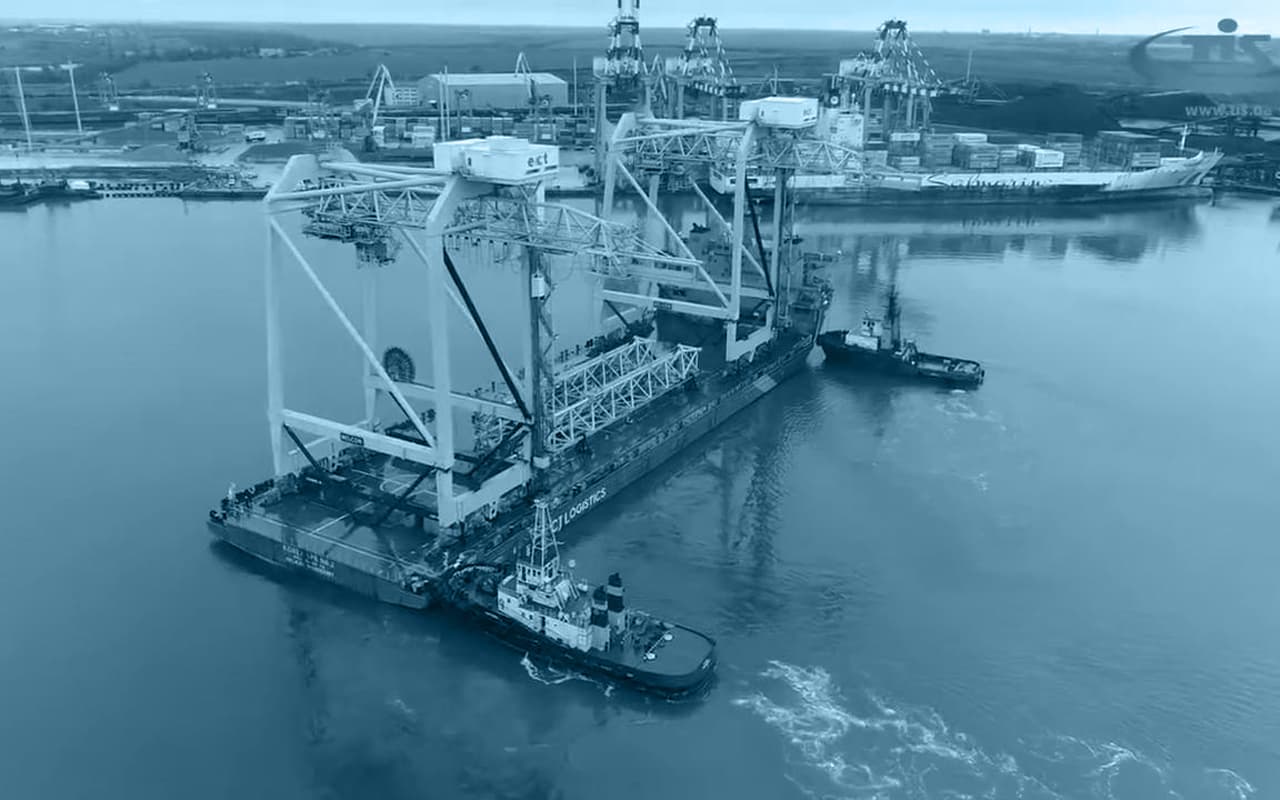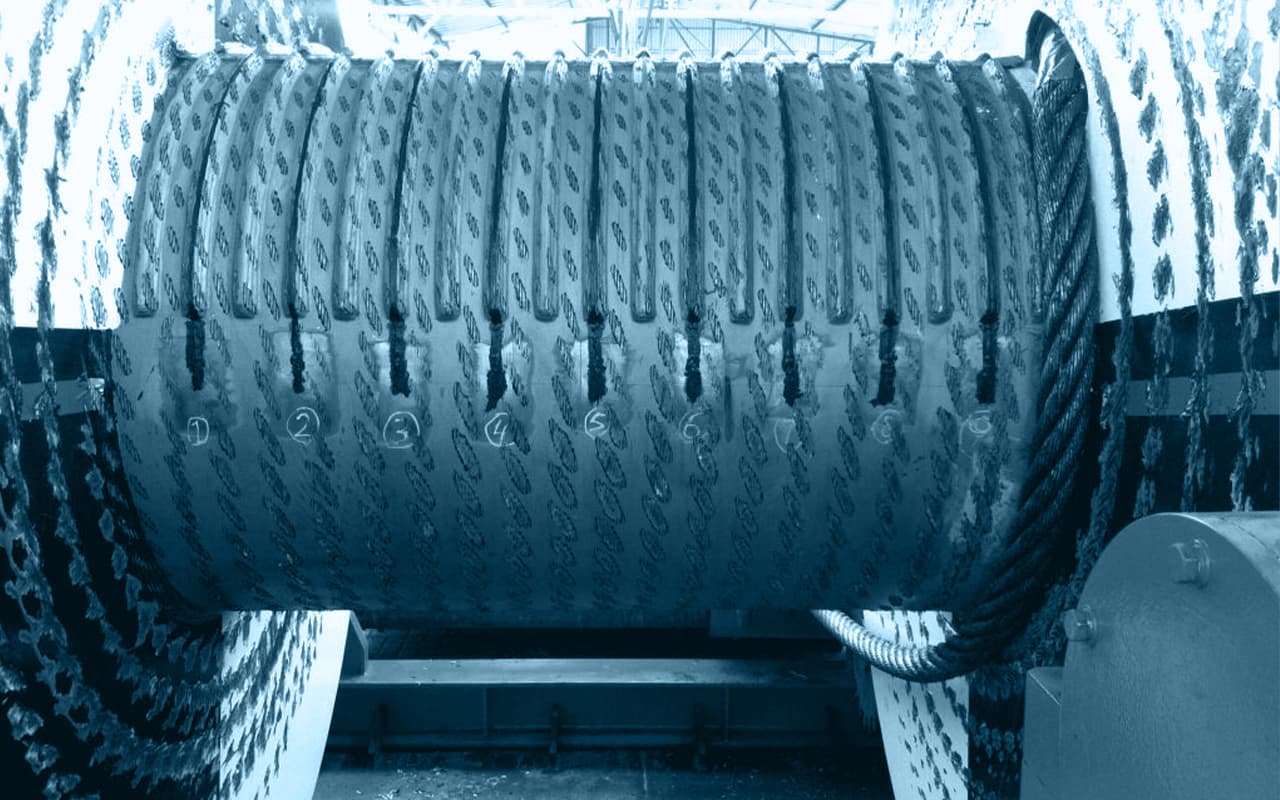Analysis of the cylinder system of grab unloader
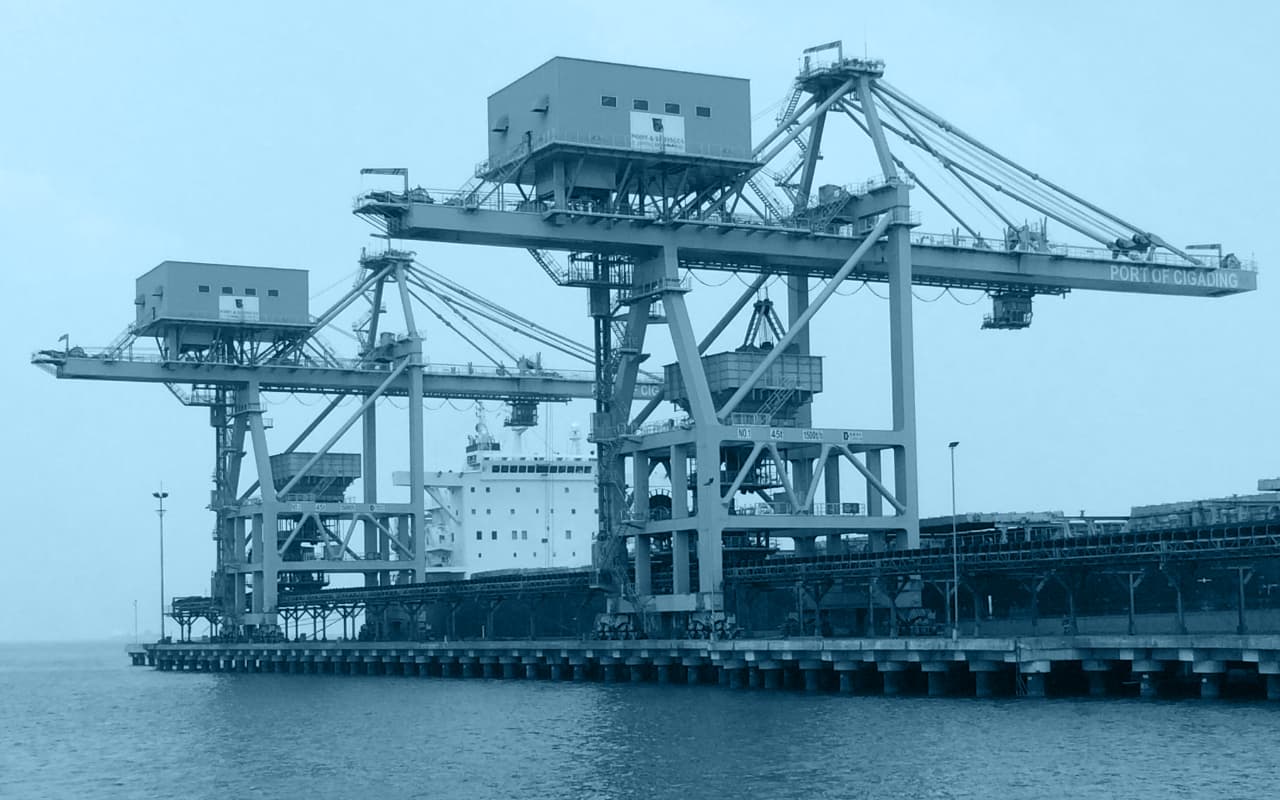
30%
The concentration of peak voltage loads decreased
>1
The maximum fatigue utilization rate is reduced
- The project involves FEA to evaluate the structural integrity of the grab unloader’s cylinder system.
- Analysis identifies critical stress points, ensuring stability and performance under operational loads.
- Results support improved durability and safety in bulk material handling operations.
Our longtime Customer, contacted the SDC Verifier Consultancy team to find a solution to problems with the cylinder system of the Grab unloader. The Customer has been confronted with two incidents with the parts of the installation with the cylinder system. The Client asked SDC Verifier to determine the system’s service life based on dynamic load; and check if the existing design of the cylinder system corresponds to the load parameters prescribed by the supplier and meets the requirements specified by the standard.
During the calculation procedure, engineers considered the loads acting on the structure, along with the loads’ directions and how they will be applied. The thread on the piston and rod was modeled in detail and the contact between the threads of the piston and rod was added to reproduce the behavior of this thread connection in the most close to reality way. It results in the complete assembly of the finite element model used in the calculations.
For more detailed checking of the fatigue damage in the thread of the rod engineers performed an additional calculation using the detailed model of this part. Was checked the situation when the piston was not screwed till the end of the rod thread (see pictures below). For checking used only part of the model to reduce calculation time.

During the first lifetime (approximately 10 mln cycles), two parts of the cylinder were demolished: the rod head (swivel head) and rod (at the location of the screw thread with which the piston is attached to the rod). The own weight of cylinders with maximum and minimum rod elongation and maximum and minimum axial force combined with the own weight were considered. Also the influence of the different load groups was described. For static stress check was taken into account situation with a maximum pressure of 315 bar in the cylinder. And fatigue check of the cylinder parts according to EN13001 was made in case of pressure range in the cylinder varies from 30 bar to 315 bar.
Static stress and fatigue checks were conducted according to EN 13001 (2018) NEN-EN 13001-3-1+A2 Cranes – General Design Part 3-1: Limit States and proof competence of steel structure (January 2018).
A static stress check was conducted according to EN13001, considering a maximum cylinder pressure of 315 bar and using material properties according to drawings and input data. The static stress check results were presented for two cases detailed above.
Results of the fatigue checks were also presented for two cases for the total number of cycles approx. 7 mln (15 years). The calculations included detailed simulations and drawings of all parts’ damage root and peak values. The highest values of fatigue damage occur on the hole at the connection with the pin. The big areas highlighted below are subjected to fatigue damage.
The highest values of fatigue damage are found at the hole – connection with a pin, where the structural failure occurred. Besides, stress overshoots also appear at the connection with rod, as shown below.
Conclusions
The detailed results were compared for the rope end connection, crosshead, swivel head, rod end, piston, and washer. The service life determined was shorter than 15 years and fatigue damage already occurred before 15 years of use. Fatigue check according to EN13001 was done with accounting for the total amount of cycles, approximately 7 mln (15 years). Stress has been checked for the piston with maximum and minimum elongation.
The cylinder was calculated for case 2, where the Pretension force in the piston thread was higher than the axial force in the cylinder due to the working conditions. In this case, the washer and rod will always be in contact. It was defined that in case 1, where the pretension force in the piston thread was less than the axial force in the cylinder due to working conditions, contact between the washer and rod (see picture below) was lost. In that case, overstressed zones may occur in the threaded part of the piston.
Static stress check according to EN13001 was done by considering the maximum cylinder pressure of 371.2 bar (329467N) and using material properties according to drawings and input data.
Values of utilization factor were analyzed thoroughly, and the conclusions were made and reported.
Based on the results of the fatigue check according to EN13001, the highest values of utilization factor are found at the rope end connection. The results indicate that, most likely, this will be the first part that will fail under the repetitive load.



